A step change in research relating to plasma nanoscience is needed for the world to overcome the challenge of sufficient energy creation and storage, says a leading scientist from CSIRO Materials Science and Engineering and the University of Sydney, Australia.
Apr 14th, 2011
Read more
NSF-supported Center for Metamaterials joins CUNY with 3 other institutions and 15 corporations; focuses on renewable energy and sensors.
Apr 13th, 2011
Read more
The National Nanomanufacturing Network is very pleased to announce that the Nanoinformatics 2020 Roadmap, a guidance document written by and intended for the broader nanoinformatics community, is now publicly available. Nanoinformatics encompasses the acquisition of information relevant to the nanoscale science and engineering community and the implementation of effective mechanisms for working with that information.
Apr 13th, 2011
Read more
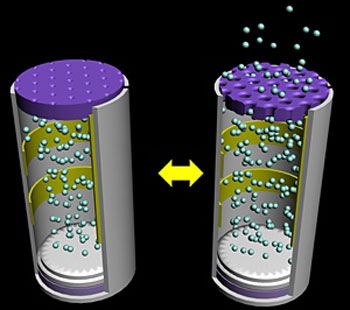 An electrochemically responsive membrane promises improved treatments for chronic diseases.
An electrochemically responsive membrane promises improved treatments for chronic diseases.
Apr 13th, 2011
Read more
Through the partnership, Carestream Health will conduct research and prototype development for some of its newest digital technologies at CNSE's Smart System Technology and Commercialization Center of Excellence.
Apr 13th, 2011
Read more
When one cloud of gas meets another, they normally pass right through each other. But now, MIT physicists have created clouds of ultracold gases that bounce off each other like bowling balls, even though they are a million times thinner than air - the first time that such impenetrable gases have been observed.
Apr 13th, 2011
Read more
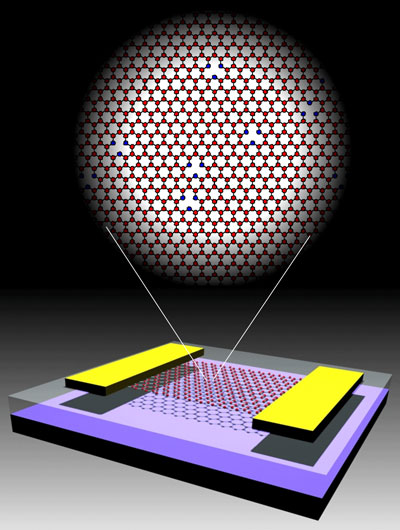 University of Maryland researchers have discovered a way to control magnetic properties of graphene that could lead to powerful new applications in magnetic storage and magnetic random access memory.
University of Maryland researchers have discovered a way to control magnetic properties of graphene that could lead to powerful new applications in magnetic storage and magnetic random access memory.
Apr 13th, 2011
Read more
Last year's $2 billion shutdown of European airspace following a volcanic eruption in Iceland alerted everyone to the danger that ash clouds can pose to aircraft engines. Now, researchers have discovered that a new class of ceramic coatings could offer jet engines special protection against volcanic ash damage in the future.
Apr 13th, 2011
Read more
After years of neglect, scientists and policy makers are focusing more attention on developing technologies needed to make the so-called "green grid" possible.
Apr 13th, 2011
Read more
Researchers here have created the first electronic circuit to merge traditional inorganic semiconductors with organic "spintronics" - devices that utilize the spin of electrons to read, write and manipulate data.
Apr 13th, 2011
Read more
NanoCentral and IntertechPira are pleased to announce the programme for the 5th edition of NanoMaterials - the leading event focusing on the commercialisation of nanotechnology in Europe - featuring Lockheed Martin, Boeing, OECD, Harris + Harris and Lux Research.
Apr 13th, 2011
Read more
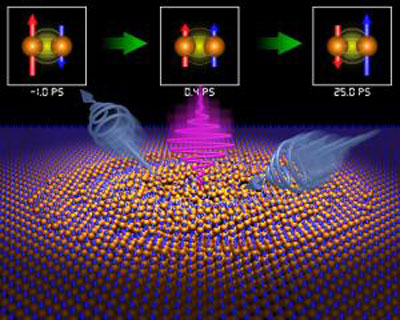 In experiments performed on the particle accelerator BESSY II of Helmholtz-Zentrum Berlin, Dutch researchers have achieved ultrafast magnetic reversal and discovered a surprising phenomenon.
In experiments performed on the particle accelerator BESSY II of Helmholtz-Zentrum Berlin, Dutch researchers have achieved ultrafast magnetic reversal and discovered a surprising phenomenon.
Apr 13th, 2011
Read more
A team of researchers from the University of Arizona and Rensselaer Polytechnic Institute have increased the toughness of ceramic composites by using graphene reinforcements that enable new fracture resistance mechanisms in the ceramic.
Apr 13th, 2011
Read more
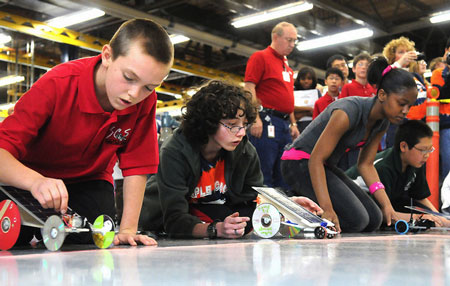 It may not be rocket science, but it's close. Fuel cells have been used to power spacecrafts for years and on Saturday, April 16, 2011, Chicago-area middle school students will use fuel cells to power model cars at equipment manufacturer Case New Holland (CNH) in Burr Ridge, Ill., as part of the Chicago Regional Science Bowl, sponsored by the U.S. Department of Energy (DOE) and Argonne National Laboratory.
It may not be rocket science, but it's close. Fuel cells have been used to power spacecrafts for years and on Saturday, April 16, 2011, Chicago-area middle school students will use fuel cells to power model cars at equipment manufacturer Case New Holland (CNH) in Burr Ridge, Ill., as part of the Chicago Regional Science Bowl, sponsored by the U.S. Department of Energy (DOE) and Argonne National Laboratory.
Apr 13th, 2011
Read more
This one-day conference and exhibition is the NanoKTN's highly successful annual showcase of new developments in nanomaterials, alongside industry end-user presentations on the challenges to be addressed within the performance engineering industries.
Apr 13th, 2011
Read more
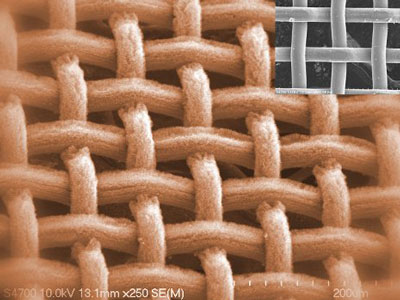 Water and oil may not mix, but, like two boxers nearing the end of the final round, they can get awfully tangled up. Now, Michigan Technological University scientists Yoke Khin Yap and Jaroslaw Drelich have created a filter that separates the two substances as quickly and cleanly as a ref breaking up a clinch.
Water and oil may not mix, but, like two boxers nearing the end of the final round, they can get awfully tangled up. Now, Michigan Technological University scientists Yoke Khin Yap and Jaroslaw Drelich have created a filter that separates the two substances as quickly and cleanly as a ref breaking up a clinch.
Apr 13th, 2011
Read more






 Subscribe to our Nanotechnology News feed
Subscribe to our Nanotechnology News feed